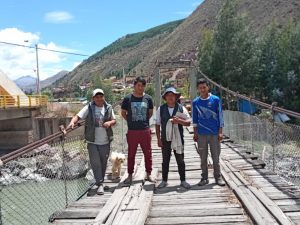TEL AVIV, Israel, Oct. 06, 2022 (GLOBE NEWSWIRE) — Legit Security, a cyber security company with an enterprise platform to secure an organization's software supply chain, today announced it was named "Cloud Security Startup of the Year" in the Cybersecurity Breakthrough 2022 Awards. The awards program aims to provide the most comprehensive evaluation of cybersecurity companies and solutions on the market today and recognizes the world's best information security companies, products and people. Over 4,100 award nominations were considered for this year's awards. Other category winners include an impressive list of top companies in the information security industry, including Crowdstrike, Palo Alto Networks, Mandiant, and others.
"We're thrilled to win this award recognizing Legit Security as a breakthrough company solving the critical challenge of software supply chain security in a very crowded and diverse information security market," said Roni Fuchs, CEO of Legit Security. "We believe that the pre–production development environments of the software supply chain need to be secured with the same rigor as production environments to ensure code–to–cloud resiliency, and we have built a platform to do just that. There's an urgent need for cybersecurity solutions like ours in the market today as software supply chain attacks continue to increase between 3x–6x per year."
Legit Security was named "Cloud Security Startup of the Year" after a process that evaluated and scored companies using an expert panel of judges representing a mix of technical, business, academic and marketing expertise within the industry. Category winners were selected based on criteria spanning innovation, business impact, functionality, ease of use, and value.
Legit Security launched the company out of stealth on February 10, 2022. The company names several Fortune 500 customers and many market–leading cybersecurity companies that use the Legit Security platform to ensure the integrity and security of their own software products. To find out more about Legit Security, visit www.legitsecurity.com.
Legit Security
Legit Security protects software supply chains from attack by automatically discovering and securing the pipelines, infrastructure, code and people so that businesses can stay safe while releasing software fast. Legit Security provides an easy to implement SaaS platform that supports both cloud and on–premises resources and combines automated discovery and analysis capabilities with hundreds of security policies developed by industry experts with real–world SDLC security experience. This integrated platform keeps your software factory secure and provides continuous assurance that your applications are released without vulnerabilities.







 Born in Chicago, raised in Lagos and currently based in London, Nigerian Dipo Faloyin is a senior editor at
Born in Chicago, raised in Lagos and currently based in London, Nigerian Dipo Faloyin is a senior editor at 